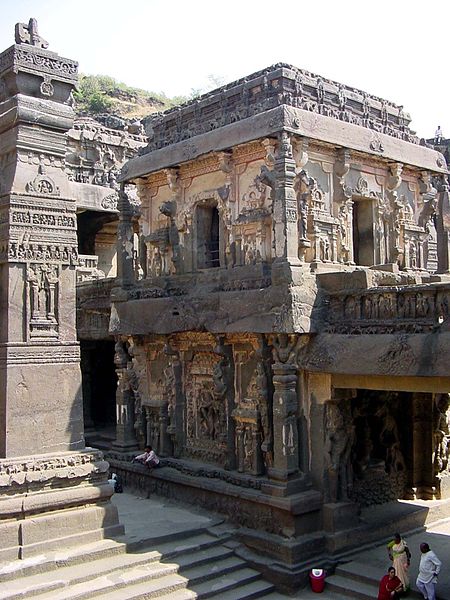
Nandi Pavilion
Kailasanatha Temple, Ellora
This is a view of the Nandi pavilion from the northwest upper level. It is close to the viewpoint of the photo on the previous page. The temple gateway lies west, to the right of the photo. The main temple lies east, to the left of the photo. The structures on the upper level are connected by a series of walkways, two of which connect the Nandi pavilion to the gateway (right) and the main temple (left). At the left of the photo appears the large north column, the same one shown on the previous page.
One should try to visualize in three dimensions the complex, multilevel, masses and surfaces of these buildings, with their delicate, connecting, arial walkways, embedded in solid rock. One can then imagine how the final structure was created, by "subtracting" the unwanted rock from that grand design.
Of course, an original model must have been made in clay so that the design could be verified and any problems worked out before the actual construction. For, unlike structural building, mistakes in monolithic excavation cannot, strictly speaking, be undone: cutting stone is irreversible, and any defect must be repaired, if at all, by additive means.
The whole process of building a rock-cut temple, of which the Kailasanatha is the best and largest example, is far closer to the subtractive process of creating a stone sculpture than to the additive, piecemeal construction of a structural building.


